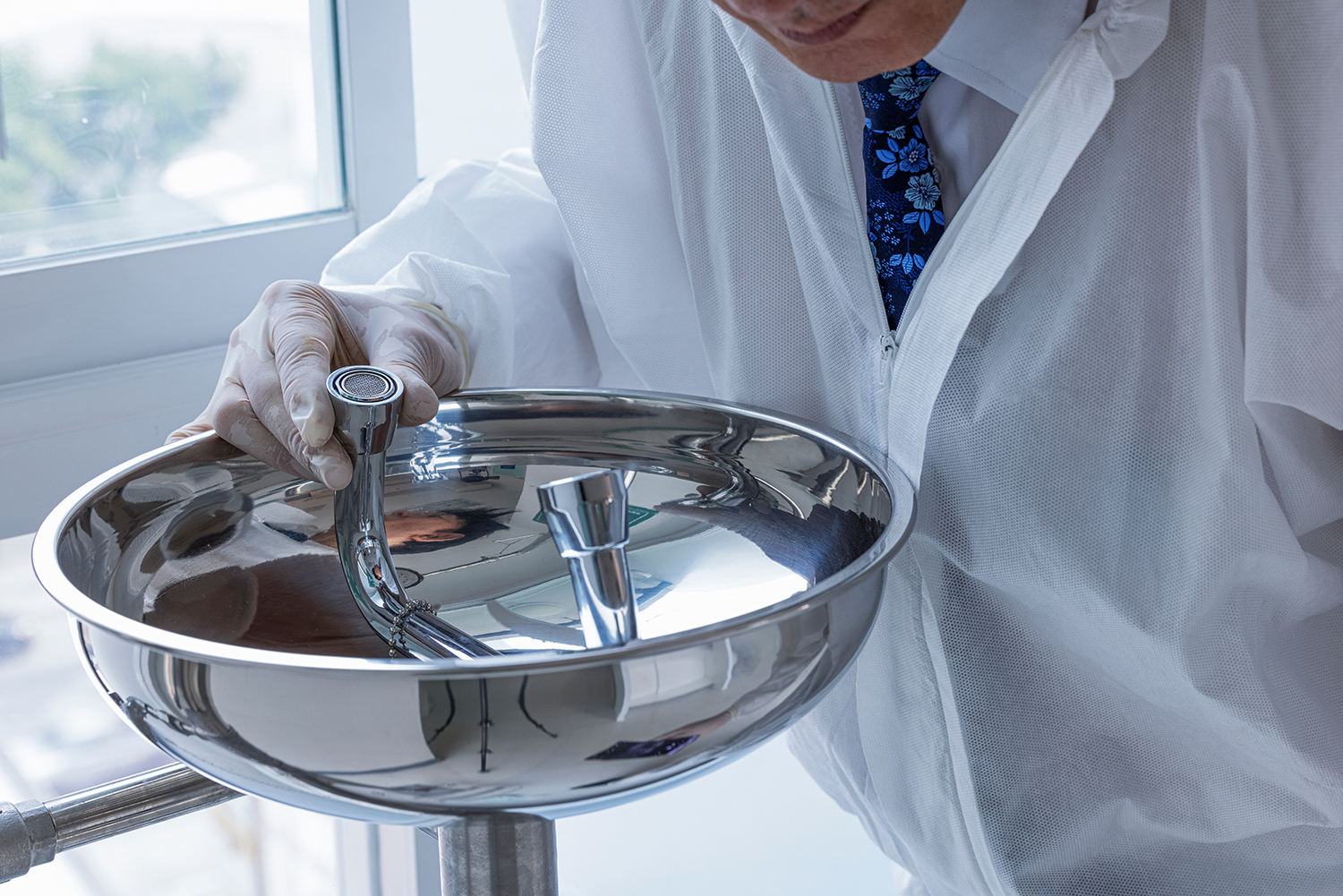Question:
How long should eyes be flushed after exposure to chemical or biological materials? — Clinical Laboratory Scientist, Academic Medical Center.
Answer:
There is a commonly held belief that eyes should be flushed for 15 minutes after an ocular exposure to chemical or biological materials. This recommendation likely arose from the American National Standards Institute’s (ANSI) Z358.1 standard for emergency eyewash equipment, which requires eyewashes to be capable of discharging water at a rate of 0.4 gallons/minute for at least 15 minutes.1 However, it should be noted that the ANSI standard does not actually specify the amount of time that eyes should be flushed in the event of an exposure.
Many chemical safety data sheets (SDS) recommend a 15-minute flush time in the event of eye exposure, but there is no clear scientific evidence supporting this. Chemicals vary in their ability to cause damage, which can range from mild irritation to severe corrosives injuries. The Occupational Health and Safety Administration’s (OSHA) Medical Services and First Aid Standard states that if a person’s eyes or body “may be exposed to injurious corrosive materials, suitable facilities for quick drenching or flushing of the eyes and body shall be provided within the work area for immediate emergency use.” This implies that an emergency eyewash is not required if injurious corrosive materials are not present in the workplace.2
There is less consensus regarding the length of time required to flush eyes after an exposure to a biological agent, as OSHA’s Bloodborne Pathogen Standard and the Centers for Disease Control and Prevention’s (CDC) Biosafety in Microbiological and Biomedical Laboratories (BMBL) simply state that an eyewash facility must be readily available in the work area/laboratory.3,4 Unlike chemical SDS, pathogen SDS and similar guidelines typically do not make references to flushing eyes for a specific amount of time after a biological exposure.5 Whereas chemicals can directly cause tissue damage, biological exposures are more likely to result in an infection or allergic reaction, and immediate flushing for a brief amount of time may be all that is required to remove the potentially infectious material. Excessive flushing after a biological exposure could also potentially cause tissue damage that might increase the risk of infection.
There is likely not a “one size fits all” requirement for the length of time eyes should be flushed after an exposure. Five minutes may be sufficient for non-irritants or mild irritants, while longer times, from 20 to 60 minutes, may be required for moderate to severe irritants and corrosive chemicals. Ultimately, each institution should implement a policy for flushing eyes after exposure to chemical or biological materials, and staff should adhere to these institutional requirements.
For more insights like this, explore our Ask the Experts series, and if you have a question of your own, we invite you to join the conversation! Submit your questions and our team of ethical and biosafety experts will provide a response.
References
- ANSI Z358.1-2014: Emergency Eyewash & Shower Standard. https://blog.ansi.org/2018/07/emergency-eyewash-station-shower-ansi-z358-1/.
- OSHA 1910.151. Medical Services and First Aid Standard. https://www.osha.gov/laws-regs/regulations/standardnumber/1910/1910.1030.
- OSHA 1910.1030(d)(3)(i). Bloodborne Pathogen Standard. https://www.osha.gov/laws-regs/regulations/standardnumber/1910/1910.1030.
- Section IV, BSL1, D, 3. Biosafety in Microbiological and Biomedical Laboratories. https://www.cdc.gov/labs/pdf/SF__19_308133-A_BMBL6_00-BOOK-WEB-final-3.pdf.
- Pathogen Safety Data Sheets. https://www.canada.ca/en/public-health/services/laboratory-biosafety-biosecurity/pathogen-safety-data-sheets-risk-assessment.html.
Don't trust your study to just anyone.
And we’re the best for a reason. Experience the WCG difference starting with a free ethical review consultation. We’re here to help you streamline, alleviate, and accelerate.
